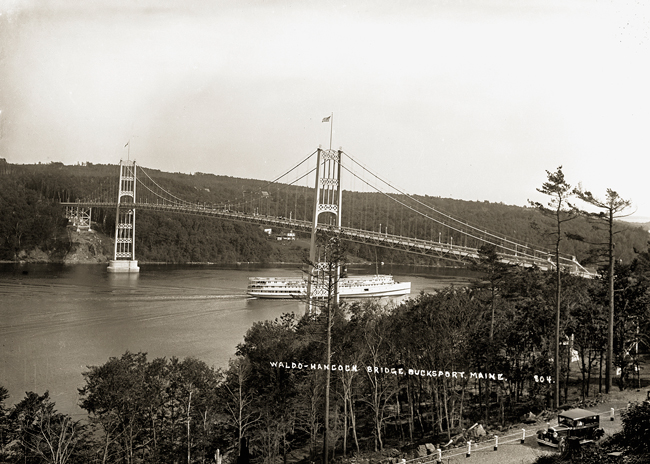B A C K T H E N
Penobscot: November 16, 1931
Waldo-Hancock Bridge
On opening day for the new Waldo-Hancock Bridge over the Penobscot River, connecting the town of Prospect with Verona Island, the Boston-Bangor steamer Belfast passes beneath. At lower right lurks an automobile, whose tribe’s explosive popularity created the need for the bridge, and which, in four years, will end the 102-year history of Boston-Bangor steamer service.
The bridge was among the earliest to employ pre-stressed wire strand cables and the Vierendeel truss later used in the Triborough and Golden Gate bridges. It also cost well under budget, permitting the construction of a second bridge between Verona Island and Bucksport and a road route across the Penobscot twenty miles downriver of Bangor. The Bucksport-Prospect ferry, which the bridges replaced, was a scow that had long inspired both rage and ridicule.
Text by William H. Bunting from Maine On Glass. Published by Tilbury House Publishers, 12 Starr St., Thomaston, Maine. 800-582-1899.
Maine On Glass and prints of the photographs are available through the Penobscot Marine Museum: PenobscotMarineMuseum.org.

